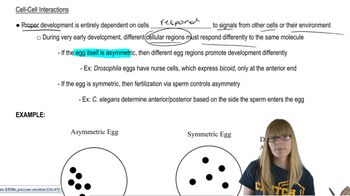Here are the essential concepts you must grasp in order to answer the question correctly.
mRNA Stability
Messenger RNA (mRNA) stability refers to the lifespan of mRNA molecules within a cell. In bacteria, mRNA is often rapidly degraded by ribonucleases, which allows for quick responses to environmental changes but limits the time available for translation. In contrast, eukaryotic mRNAs have longer half-lives due to protective structures like the 5' cap and poly-A tail, which enhance their stability and translation efficiency.
Recommended video:
Transcription and Translation in Prokaryotes vs. Eukaryotes
In prokaryotes, transcription and translation occur simultaneously in the cytoplasm, leading to rapid protein synthesis but also rapid degradation of mRNA. Eukaryotes, however, separate these processes; transcription occurs in the nucleus, and mRNA is processed before being transported to the cytoplasm for translation. This separation allows eukaryotic cells to regulate gene expression more effectively and produce proteins over a longer time frame.
Recommended video:
Prokaryotic Transcription
Insulin Production in Pancreatic Cells
Pancreatic cells, specifically beta cells, produce insulin in response to glucose levels. The stability of mRNA is crucial for these cells, as they need to synthesize large amounts of insulin efficiently. Longer-lived eukaryotic mRNAs allow for sustained production of insulin, which is advantageous for maintaining glucose homeostasis, especially in response to fluctuating blood sugar levels.
Recommended video:






